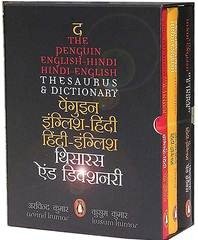Nighantu onwards
In India, the tradition of glossaries, thesauruses and dictionaries goes back to the Vedic age, between 3000 and 1500 bc. The world’s first-known and extant thesaurus is Nighantu, a glossary of 1,800 Vedic words, arranged subject-wise. Its compiler, Kashyap, was bestowed with the lofty title of Prajapati, the progenitor. Nirukt, the sage Yask’s treatise on Nighantu, may have been the world’s first dictionary-encyclopaedia; it gives words and their meanings which are elaborated upon in great detail.
There were several subsequent compilations of Sanskrit dictionaries. The Shabdakalpadrum, a Sanskrit dictionary of an unknown date, lists twenty-nine such works, most of which were arranged subject-wise and were, in a broad sense, thesauruses.
Amar Kosh is the bible of all the Sanskrit thesauruses. Its author, Amar Singh (Amar Simha in Roman Devanagari) gave his work the title of Namalinganushasan (the Discipline of Names and Genders). It was also called Trikaand, because it was divided in three hierarchical cantos with twenty-five chapters having a total of 8,000 words in 1,502 shlokas or verses. It is popularly known as Amar Kosh to acknowledge the achievement of its author, just as the English thesaurus, in all its editions and variations, is better known as Roget’s Thesaurus.
When the Amar Kosh first made its appearance is not known, but it may have been written between the fourth and the tenth centuries ad. Ancient Indians rarely kept records of dates! Like the later Roget’s Thesaurus, Amar Kosh was an instant success. Its fame spread beyond the Himalayas and it became the subject of numerous treatises. It is said that one Pandit Gunaraj translated it into Chinese in the sixth century. The Hindi–Persian poet, Ameer Khusro’s Khalikbari (twelfth–thirteenth century ad) was directly inspired by it. His Persian–Hindi thesaurus-cum-dictionary can be counted among the early bilingual thesauruses of the world.
Even before Independence, many individuals and organizations in India were making Hindi, English–Hindi and Hindi–English dictionaries. The vast Hindi dictionaries of Nagari Pracharini Sabha (Varanasi) and Hindi Sahitya Sammelan (Allahabad) are examples of the remarkable collective work and modern India’s attempts in lexicography. India’s independence from British rule in 1947 greatly accelerated the process; the nascent nation had to come to terms with a new world. This gave a new urgency to dictionary making.
Under the British rule, many Indians opposed the usage of English which they viewed as an imperial imposition on the country. After Independence, however, English was increasingly perceived as an important portal of India to the world. This explains the emphasis on the creation of English–Hindi and Hindi–English dictionaries. Some bilingual dictionaries between Hindi and languages like Russian and German were also made. The Government of India set up commissions to coin technical terms so that Hindi could replace English as the medium of education, governance and technological development.
Log on to http://arvindkumar.me and register today.
©Arvind Kumar

Comments